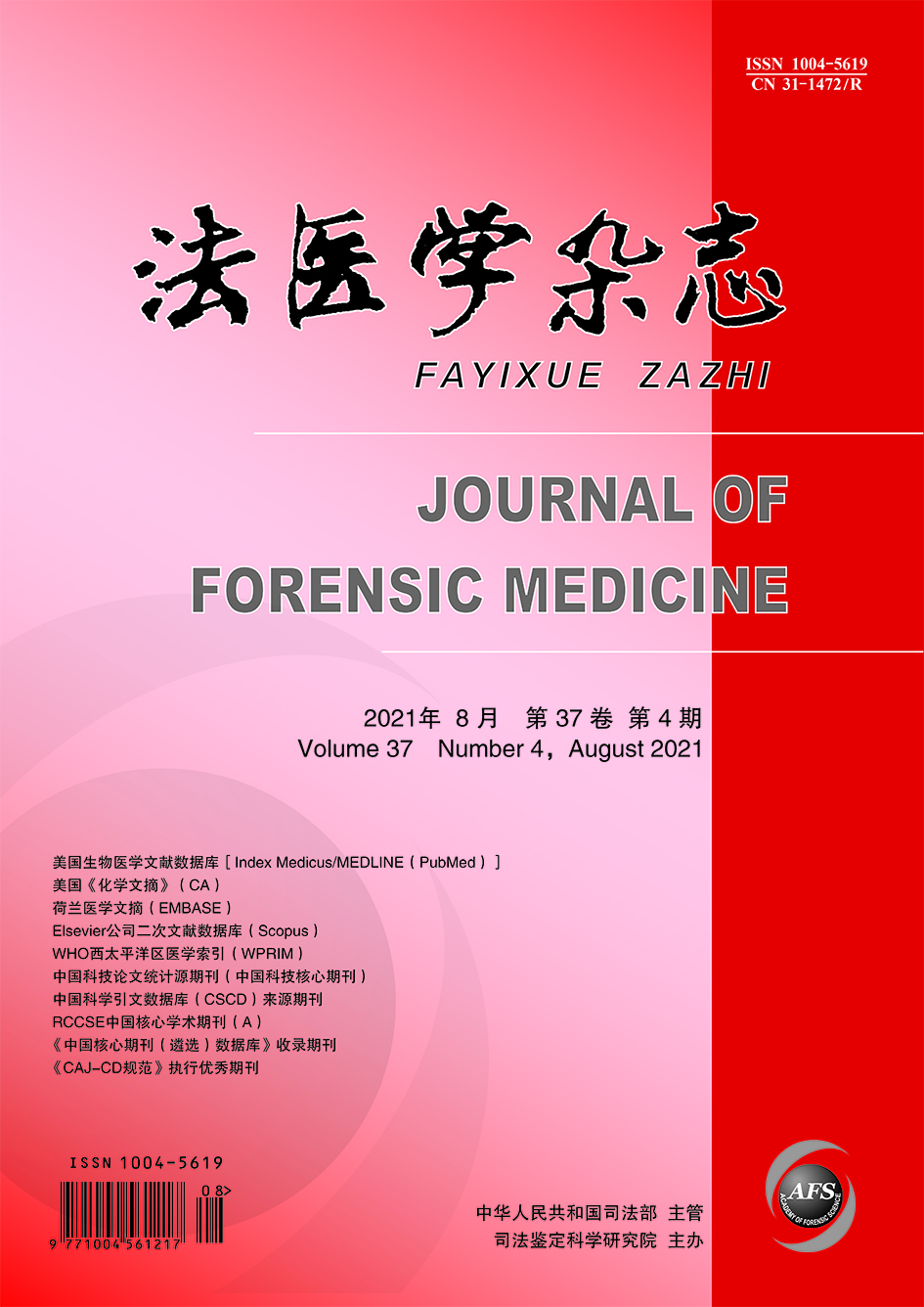|
|
Determination of Salt Forms of New Psychoactive Substances by Ion Chromatography
CHEN Yue-meng, HUA Zhen-dong, LIU Cui-mei, et al.
2021, 37(4):
500-504.
DOI: 10.12116/j.issn.1004-5619.2021.310402
Objective To establish an ion chromatography method for the salt form determination of new psychoactive substances (NPS). Methods The method of conducting qualitative and quantitative analysis of six types of organic acid ions (acetate ion, tartrate ion, maleate ion, oxalate ion, fumarate ion, citrate ion) and five types of inorganic anions (fluoride ion, chloride ion, nitrate ion, sulfate ion, phosphate ion) in NPS sample by ion chromatography was developed. The salt forms of 222 seized NPS samples (103 samples with synthetic cannabinoids, 81 samples with cathinones, 44 samples with phenylethylamines, 12 samples with tryptamines, 7 samples with phencyclidines, 6 samples with piperazines, 2 samples with aminoindenes, 26 samples with fentanyls and 43 samples with other types of NPS) were analyzed by this method. Results Each anion had good linearity in the corresponding linear range, the correlation coefficients (r) were greater than 0.999, the limits of detection were 0.01-0.05 mg/L, and the limits of quantitative were 0.1-0.5 mg/L. Except that 5F-BEPIRAPIM was hydrochloride, the salt forms of the other 102 synthetic cannabinoids were all base. The salt form of 81 cathinone samples, 44 phenylethylamine samples, 7 phencyclidine samples and 2 aminoindene samples were all hydrochloride. The salt forms of tryptamine samples included base, hydrochloride, fumarate and oxalate. The salt forms of piperazine samples included base and hydrochloride. The salt forms of fentanyl samples and samples of other types included base, hydrochloride and citrate. Conclusion Ion chromatography is a simple, accurate and efficient method for determining the salt form of NPS samples, which makes the qualitative and quantitative conclusions of NPS more scientific and rigorous.
Related Articles |
Metrics
|


